13 Exquisitely Extreme Things About Planet Earth
In celebration of Earth Day: An ode to our awesome orb.
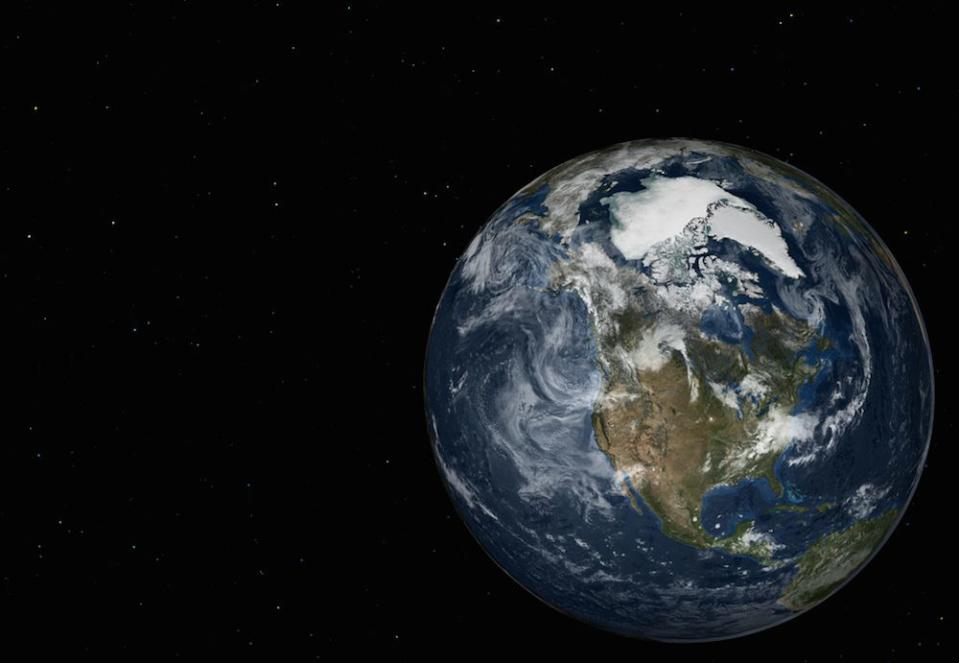
NASA/Goddard Space Flight Center/flickr
CC BY 2.0Allow me to roll out a cliché and say that here at Treehugger, every day is Earth Day. Tips on going green and sustainable design and treehugging in general are business as usual; our modus operandi 24/7. But who would we be to let such a momentous day as April 22 pass without some fanfare? So with that in mind, here’s some praise for the planet, glory for the globe, an all-around high-five highlighting some randomly remarkable features of this wild world we’re so lucky to call home.
1. Earth Plays Host to Deadly, Exploding Lakes
Why should science fiction and horror movies have all the fun? Earth is pretty dramatic too. We’ve even got exploding lakes. In Cameroon and on the border of Rwanda and the Democratic Republic of the Congo there are three crater lakes—Nyos, Monoun, and Kivu—which sit above volcanic earth. The magma below releases carbon dioxide into the lakes, and the gas can escape, forming a limnic eruption, potentially killing everything nearby. Around Kivu Lake, geologists have found evidence of massive biological extinctions about every thousand years.
2. And Boiling Rivers
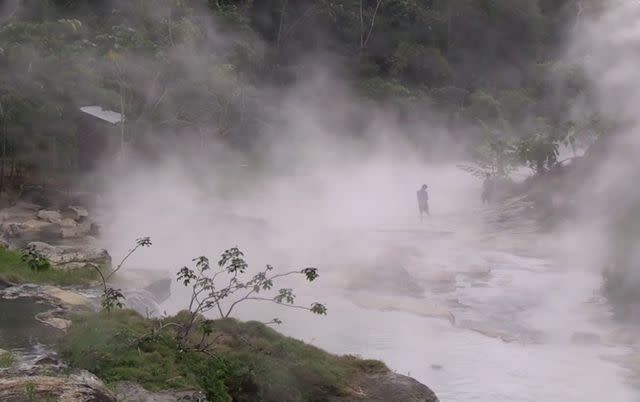
Hidden deep in the Peruvian rainforest and overseen by a powerful shaman, the sacred healing site of Mayantuyacu is home to a 4-mile-long river that is 82 feet wide and 20 feet deep. And boasts water temperatures that range from 120 F to 196 F; in some parts, it actually boils! Animals who fall in are killed quickly. And while there are hot springs in the Amazon, there is nothing like this river which is known to locals as Shanay-timpishka.
Learn More:Mysterious 4-Mile Long River in Peru Is So Hot It Actually Boils
3. The Planet is Covered in Stardust
Every year, 40,000 tons of cosmic dust fall upon our planet. It’s not something we notice, but eventually, all that dust, which is made of oxygen, carbon, iron, nickel, and all the other elements, finds its way into our bodies. When they say, "we are stardust," we quite literally are.
4. You Can’t Keep a Good Planet Still
While we may feel like we’re standing still, of course, we are not. We’re actually spinning wildly and flying through space! It's a wonder life seems so calm. Depending on where you are, you could be spinning at over 1,000 miles per hour (though those on the North or South poles would be still). Meanwhile, we’re moving around the sun at a zippy 67,000 miles per hour. Whoosh.
5. It Has Some Really Cold Spots
According to NASA Earth satellites, the place with the lowest temperature in the world is on the East Antarctic Plateau, high up on a mountain ridge, Just how cold does it get? "The lowest temperature the satellites detected: minus 136 F (minus 93.2 C), on Aug. 10, 2010."
6. And Others That Are as Hot as Hades
On the other end of the mercury, Death Valley plays home to the hottest temperatures recorded: the hottest on the planet being 134 F on July 10, 1913, according to Guinness World Records. That was not a good week in the desert; temperatures reached 129 F or above on five consecutive days. More recently, the summer of 2001 saw 100 F for 154 consecutive days, while the summer of 1996 was bestowed with 105 days over 110 F and 40 days when the mercury reached 120 F.
More recently, it hit 130 F (54.4 C) at Death Valley's Furnace Creek Visitor’s Center on Friday, July 9, 2021. If verified, this would be Earth’s highest reliably measured temperature.
7. The High Highs are Really High
At 29,028 feet above sea level, Mount Everest is the highest place on Earth when measured by sea level. But if you measure height based on the distance from the center of the planet, Mount Chimaborazo in the Andes Mountains in Ecuador takes the prize. Although Chimaborazo is about 10,000 feet shorter (relative to sea level) than Everest, this mountain is about 1.5 miles farther into space because of the equatorial bulge.
8. And the Low Down is Deep
The lowest point on Earth is the Mariana Trench in the western Pacific Ocean. It reaches down about 36,200 feet (nearly 7 miles) below sea level.
9. The Planet Has Rocks That Scoot Themselves
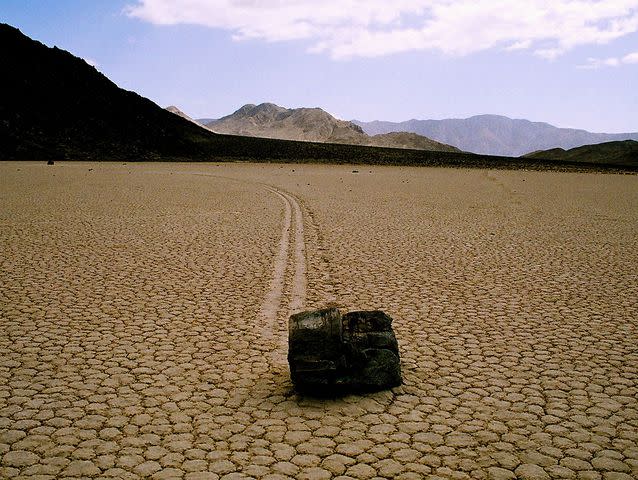
In a remote stretch of Death Valley, a lakebed known as Racetrack Play plays home to one of the natural world’s more compelling mysteries: Rocks that sail across the bed of the lake, propelled by nothing that anyone can see. Known as the sailing stones, they comprise a puzzle that has long-stumped scientists and has rarely ever been seen in action, save for the long meandering tracks left behind in the mud surface. One theory holds that the scooting is caused by a succinct combination of rain, wind, ice, and sun, all playing in concert. Or .... ?
10. And Dunes That Sing
Around 30 places across the planet have sand dunes that sing and croak, creating low droning music that lands somewhere between chanting monks and a swarm of bees. From the Gobi Desert and Death Valley to the Sahara and Chilean desert, the source of the sounds has long remained a mystery, although there are a number of theories explaining the sonic phenomena, it remains a hotly debated topic.
11. There’s a Sweet Spot for Lightning
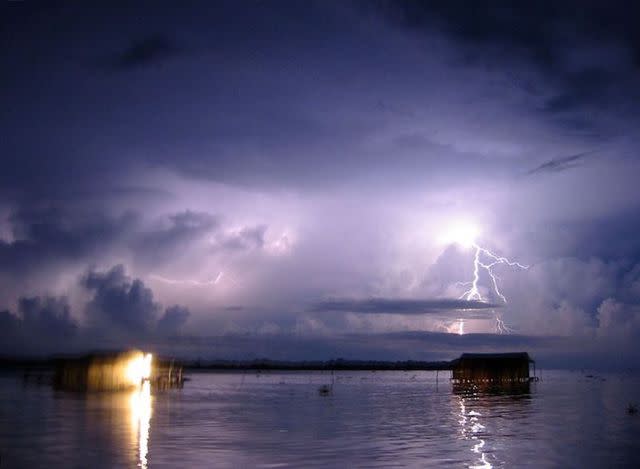
Every night in northwestern Venezuela, where the Catatumbo River meets Lake Maracaibo, a thunderstorm occurs. And not just a passing show, but a storm that can last up to 10 hours and averages 28 lightning strikes per minute. Known as Relámpago del Catatumbo (the Catatumbo Lightning) it can strike as many as 3,600 bolts in an hour. Every night!
Learn More:Where in the World Does Lightning Strike the Most?
12. The World Below is a Giant, Mysterious Thing
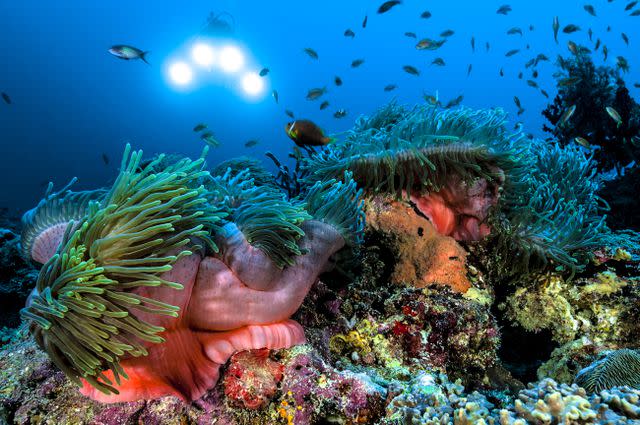
We think we’re so fancy with our terrestrial lives, but you should see what’s going on down in the coral reefs. It is there in which exists the most species per unit area of any of the planet's ecosystems, even more than the rainforests. And while the reefs are comprised of tiny individual coral polyps, together they form the largest living structures on Earth, even visible from space.
13. And We Don’t Know the Half of It
While oceans cover around 70% of the planet, we’ve only explored some 5% of them. In a similar vein, scientists estimate that there are anywhere between 5 million and 100 million species on Earth, but ... we have identified only about 2 million of them.
We think we know it all, but there is so much left to discover. What a wonderful world!

